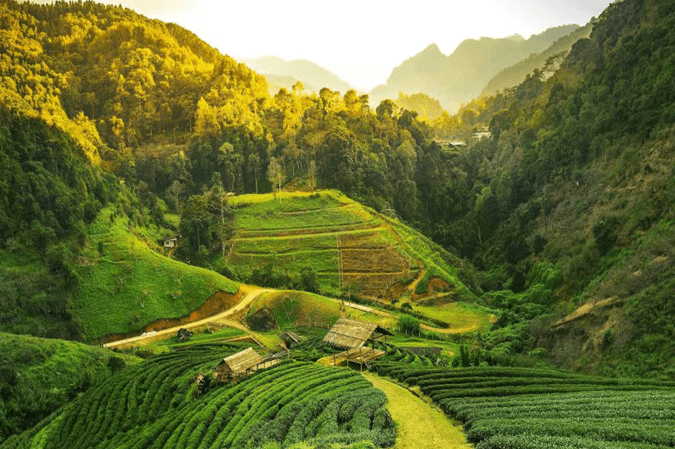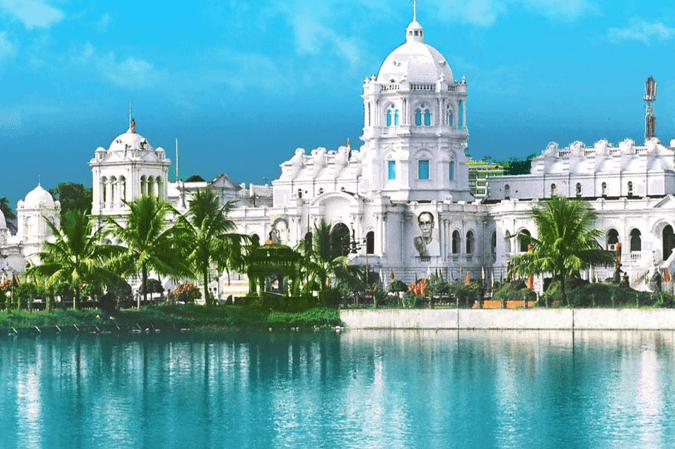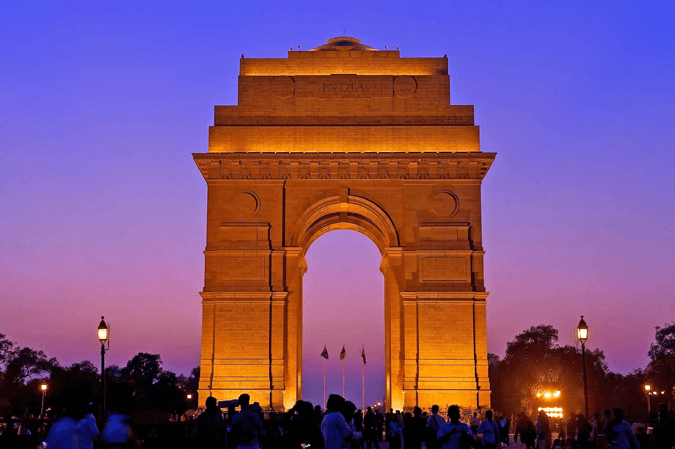Assam, located in the northeastern part of India, is known for its lush green landscapes, sprawling tea gardens, and rich cultural heritage. It is a gateway to the northeastern region and holds a unique position due to its historical significance, biodiversity, and vibrant festivals.
History
- Ancient and Medieval History: Assam has a rich history that dates back to ancient times. The earliest mention of Assam is found in the Mahabharata and other ancient Hindu texts, where the region is referred to as Pragjyotisha and Kamarupa. The region was ruled by several powerful dynasties, including the Varmanas, Salastambhas, and the Ahoms. The Ahom dynasty, which ruled Assam for nearly 600 years (1228-1826), played a crucial role in shaping its culture and traditions.
- Colonial Period: Assam came under British rule after the Treaty of Yandabo in 1826, following the defeat of the Burmese. During British rule, Assam was initially a part of Bengal, but in 1874, it was separated and made a Chief Commissioner’s Province.
- Post-Independence: After India gained independence in 1947, Assam became a part of the Indian Union. Over time, several northeastern states were carved out of Assam, including Meghalaya, Mizoram, and Nagaland. Today, Assam is an important state in the northeast with a significant contribution to India’s economy and culture.
Landscape and Area
- Area: Assam covers an area of 78,438 square kilometers, making it the largest state in northeastern India.
- Geography: The state is characterized by the Brahmaputra River Valley, the Barak River Valley, and the hilly regions of the Karbi Anglong and Dima Hasao districts. The Brahmaputra River dominates Assam’s geography, splitting the state into northern and southern regions. Assam also has dense forests, tea plantations, and national parks, contributing to its diverse landscape.
- Hills and Valleys: The state is home to the Eastern Himalayas and the Patkai Hills. The Kaziranga National Park and Manas National Park, both UNESCO World Heritage Sites, are located in the state and are crucial for wildlife conservation.
Climatic Conditions
- Subtropical Climate: Assam experiences a subtropical monsoon climate, characterized by hot summers, heavy rainfall during the monsoon, and mild winters.
- Summer (March-June): Summers are hot and humid, with temperatures ranging from 28°C to 38°C.
- Monsoon (July-September): Assam receives heavy rainfall during the monsoon season, especially from the southwest monsoon, causing frequent floods. The state receives an average annual rainfall of 2,500 to 3,000 mm.
- Winter (October-February): Winters are mild and pleasant, with temperatures ranging from 8°C to 25°C.
Historical Places
- Kaziranga National Park: A UNESCO World Heritage Site, Kaziranga is famous for its one-horned rhinoceroses, tigers, elephants, and diverse birdlife.
- Manas National Park: Another UNESCO World Heritage Site, Manas is known for its rich biodiversity, including endangered species like the golden langur, pygmy hog, and Bengal florican.
- Kamakhya Temple: Located in Guwahati, Kamakhya Temple is one of the most important Shakti Peethas in India and attracts thousands of devotees annually, especially during the Ambubachi Mela.
- Sivasagar: This historic town was the capital of the Ahom Kingdom and is home to several monuments, including the Rang Ghar, Talatal Ghar, and Sivadol.
- Hajo: A pilgrimage site for Hindus, Buddhists, and Muslims, Hajo is known for its ancient temples and shrines, such as the Hayagriva Madhava Temple and the Powa Mecca.
- Majuli Island: Located in the Brahmaputra River, Majuli is the largest river island in the world and is known for its unique Vaishnavite culture and monasteries called Satras.
Festivals
- Bihu: The most important festival in Assam, Bihu is celebrated three times a year – Rongali Bihu (celebrating the Assamese New Year), Kongali Bihu (marking the completion of sowing), and Bhogali Bihu (celebrating the harvest). Bihu is marked by dancing, music, and feasting.
- Ambubachi Mela: This annual festival at the Kamakhya Temple is a significant religious event for Hindus and is linked to the tantric fertility rituals.
- Dehing Patkai Festival: Celebrated in the eastern part of Assam, this festival showcases the state’s rich biodiversity and culture, with an emphasis on eco-tourism and adventure sports.
- Majuli Raas Mahotsav: Held in Majuli, this festival is dedicated to Lord Krishna and is marked by performances of Raas Leela and other cultural programs.
- Ali Ai Ligang: Celebrated by the Mishing tribe, this is a harvest festival that marks the beginning of the sowing season.
Environment and Biodiversity
- Biodiversity: Assam is a biodiversity hotspot with rich flora and fauna. The state is home to several national parks, wildlife sanctuaries, and biosphere reserves.
- National Parks and Wildlife Sanctuaries:
- Kaziranga National Park: Famous for its population of the Indian one-horned rhinoceros, Kaziranga is also home to tigers, elephants, and migratory birds.
- Manas National Park: Known for its population of rare and endangered species, including the golden langur and Bengal tiger.
- Nameri National Park: Located on the foothills of the Eastern Himalayas, Nameri is known for its birdlife, particularly the endangered white-winged wood duck.
- Dibru-Saikhowa National Park: A riverine island park known for its grasslands, wetlands, and rich birdlife.
- Conservation Issues: Assam faces several environmental challenges, including deforestation, human-wildlife conflict, and frequent floods. Conservation efforts are ongoing to protect endangered species and preserve Assam’s natural resources.
Society
- Population: Assam has a population of over 31 million (as per the 2011 Census). The state is ethnically diverse, with a mix of tribal and non-tribal communities.
- Tribal Communities: Assam is home to several indigenous tribes, including the Bodos, Misings, Karbi, Rabha, and Tea Tribes. These tribes have distinct cultures, languages, and customs.
- Languages: Assamese is the official language of the state, while Bengali is spoken in the Barak Valley region. Other languages include Bodo, Hindi, and English.
- Religion: The majority of Assam’s population practices Hinduism, followed by Islam, Christianity, and tribal religions.
- Economy: Assam’s economy is primarily agrarian, with tea, rice, jute, and oil being major contributors. The state is the largest producer of tea in India, and the Assam Tea brand is globally recognized.
Interesting and Hidden Facts
- Largest Tea Producer: Assam is the largest tea-producing state in India and accounts for over 50% of the country’s tea production. The state’s tea estates, such as those in Jorhat and Dibrugarh, are world-famous.
- Majuli Island: Majuli, located in the Brahmaputra River, is the world’s largest river island and is a hub of Vaishnavite culture. It is home to several Satras, or monasteries, founded by the Assamese saint Srimanta Sankardeva.
- One-Horned Rhinoceros: Assam is known for the one-horned rhinoceros, which is primarily found in Kaziranga National Park. The species is a symbol of wildlife conservation in the state.
- Frequent Floods: The Brahmaputra River often causes devastating floods during the monsoon season, displacing people and causing significant damage to infrastructure.
- Ahom Dynasty: The Ahom dynasty, which ruled Assam for nearly 600 years, resisted Mughal invasions and preserved Assam’s distinct identity. The Battle of Saraighat (1671) is one of the most famous battles in Assam’s history, where the Ahoms defeated the Mughal army.
Sources
- Government of Assam Official Website
- Assam Tourism Development Corporation
- National Geographic – India State Guide
- UNESCO World Heritage Sites
- “The History of Assam” by Edward Gait
- Image Source: cnbctv18.com



